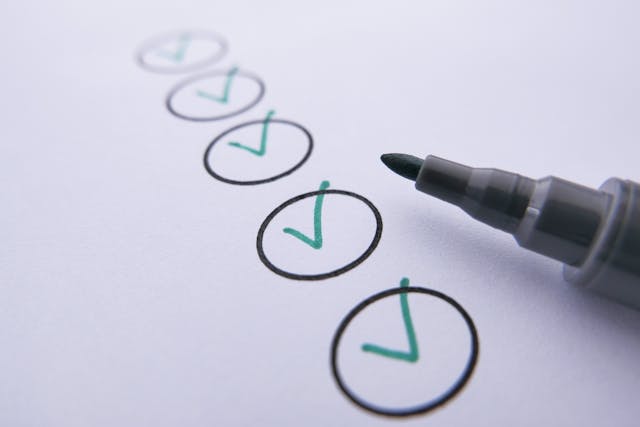Learning a foreign language with your partner or friend can be an exciting and rewarding adventure. It offers a unique opportunity to share goals, motivate each other, and tackle challenges together. From practicing daily conversations to navigating tricky grammar rules, the journey becomes more enjoyable and productive as a team. Our three-part blog post series will dive into practical strategies to help you and your language-learning partner succeed together!
Are you and your partner or friend the right match for this adventure?
Take our short quiz to find out?
1. What Type of Support Will You Provide Each Other During the Journey?
Firstly, a successful language-learning partnership thrives on mutual support. That is why, knowing how you can encourage each other and stay accountable is essential.

Ways to Help Your Partner or Friend While Learning a Foreign Language Together
- Sharing Language Learning Resources:
Exchange notes, share flashcards, or split the cost of premium language apps to maximize learning while saving time and effort for both of you.
- Providing Feedback:
Quiz each other on grammar rules, sentence translations, and pronunciation. Offer each other constructive feedback to improve both of your levels while fostering mutual growth and confidence.
- Motivation Boosters:
Cheer each other on during tough days and celebrate milestones, like completing a language level certification or having your first conversation with a native speaker.
- Accountability Partners:
Schedule regular check-ins to track progress and keep each other focused on achieving your language-learning goals.
2. Setting Language Learning Goals (Individual and Common)
Secondly, clear goals are the foundation of a successful language-learning journey. Establishing individual goals, shared goals, or a combination of both will help you and your partner or friend stay motivated and accountable.
This becomes especially important if there’s a difference in language proficiency or learning pace between the two of you, as tailored goals can bridge the gap and keep both of you actively engaged.

How to Proceed with Goal Setting with you partner or friend
- Individual Goals:
Tailor these to your personal strengths and learning pace. For example: “Learn 50 new words related to food this week” or “Practice reading in the target language for 10 minutes daily.”
- Shared Goals:
These help you stay connected and motivated as a team. For instance: “Hold a 5-minute conversation together or with a native speaker by the end of the month.
Make a Vision Board Together
Creating a vision board is a powerful way to anchor your language learning goals and stay motivated throughout your journey. Use your personal vision board to highlight objectives like mastering verb conjugations or planning a trip to a country where the language is spoken.
Additionally, you and your partner or friend can create a shared vision board to visualize joint dreams, such as traveling together to countries where your target language is spoken.
In both cases, include relevant images, motivational quotes about language learning, and symbols of achievement, like certificates for completing courses. Keep these boards visible on your personal devices or in a shared space as a daily reminder of your commitment and shared progress.
3. Scheduling: How Will You Both Make It Work?
Finding time to learn a foreign language can be tricky, especially when coordinating two schedules. The key to success is creating a routine that works for both you and your partner or friend and staying consistent as much as possible.

Create a Common Schedule:
- Set Dedicated Time:
Agree on specific days and times for joint practice sessions to establish consistency. For instance, you might reserve Tuesday and Thursday evenings for grammar exercises and dedicate Saturday mornings to speaking practice. Having a set schedule helps ensure both partners remain committed.
- Sync with Personal Schedules:
Aside from your joint sessions, leave space for solo study tailored to your individual needs. This allows you to focus on personal areas of improvement while still benefiting from collaborative practice. - Allocate Specific Language Learning Activities for each time slot:
Maximize your study time by pre-planning the focus of each joint session. Decide in advance whether you’ll work on grammar, vocabulary, or conversational skills. For instance, one session could focus on mastering conjugation rules for past tenses while another could involve practicing specific vocabulary words in sentences to build fluency.
Be Flexible:
Finally, life is unpredictable, and even the most carefully planned schedules can shift. It’s important to maintain open and honest communication with your partner or friend when unexpected changes arise. Whether it’s rescheduling a session due to work commitments or adapting your approach to fit a busy week, flexibility ensures that you stay on track without feeling overwhelmed. The key is to balance adaptability with consistency.
Conclusion
Learning a foreign language with your partner or friend can be a deeply enriching experience when approached strategically, and thoughtfully. By supporting each other, setting clear goals, and creating a practical schedule, you’ll build a strong foundation for success.
Stay tuned for Part 2 of our series, where we’ll explore the best tools and methods for learning a foreign language together.















